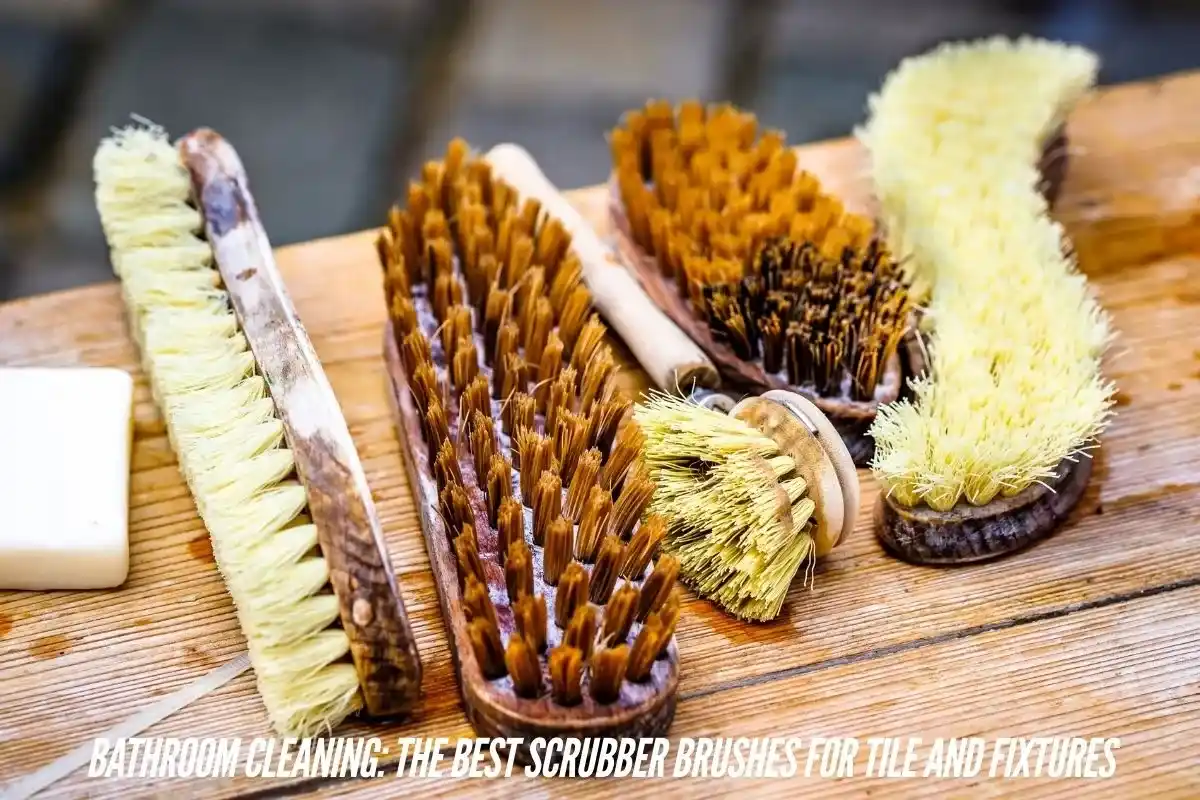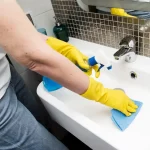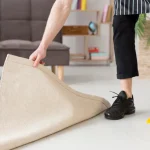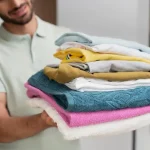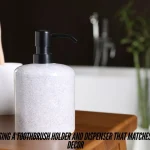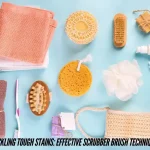Cleaning the bathroom is no one’s favorite chore, but it’s one that has to be done regularly to keep your space fresh, hygienic, and looking its best. Scrubbing tile and fixtures might seem like a daunting task, but with the right tools—especially a high-quality scrubber brush—you can make this chore a lot easier and more effective. As Martha Stewart points out, “A good scrubber brush is essential for keeping your bathroom clean and sparkling” (Martha Stewart).
In this guide, we’ll dive into the world of bathroom scrubber brushes, discussing the best types for cleaning tile and fixtures, and how to choose the one that fits your needs. You’ll also get expert insights, research-backed tips, and personal anecdotes to help you make the most informed decision for your bathroom cleaning routine.
Why the Right Scrubber Brush Matters
You might think all scrubber brushes are the same, but anyone who has spent time scrubbing away soap scum and mildew knows that the right brush can make all the difference. Joanna Gaines puts it simply: “A clean bathroom is a happy bathroom. The right scrubber brush can make a big difference” (Joanna Gaines).
Choosing a scrubber brush that’s designed for specific surfaces, like tile or fixtures, will not only make your cleaning easier, but it can also protect those surfaces from unnecessary wear and tear. A brush that’s too rough might scratch delicate fixtures, while one that’s too soft may not clean grout effectively.
Types of Scrubber Brushes for Bathroom Cleaning
There’s no one-size-fits-all solution when it comes to scrubber brushes, which is why it’s important to understand the different types available and their uses.
1. Nylon Bristle Scrubber Brushes
Nylon bristle brushes are a popular choice for cleaning bathroom tiles. They’re tough enough to scrub away grime but gentle enough not to damage the tile’s surface. These brushes are also resistant to mildew and mold, making them ideal for use in damp environments like bathrooms.
Personal Tip: I’ve found that using a nylon bristle brush with a long handle is great for reaching the corners of my shower tiles. My bathroom doesn’t have the best ventilation, so mildew can quickly become a problem. The long handle saves me from bending over and gives me the leverage I need to scrub effectively.
2. Electric Scrubber Brushes
For those who want to make cleaning faster and easier, electric scrubber brushes are an excellent option. These brushes do the hard work for you, with rotating heads that scrub away dirt and grime with minimal effort. They come with various attachments designed for different surfaces, making them a versatile tool for bathroom cleaning.
In my experience, switching to an electric scrubber brush was a game-changer. It made cleaning grout lines, which used to take ages, much faster. I didn’t have to use as much elbow grease, and the results were even better. Nate Berkus emphasizes the importance of good cleaning tools: “A well-organized and clean bathroom is a sanctuary. The right tools, like a good scrubber brush, can help you achieve that” (Nate Berkus).
3. Microfiber Scrubber Brushes
Microfiber scrubbers are soft and absorbent, making them perfect for cleaning delicate fixtures like faucets, showerheads, and glass surfaces. These brushes lift dirt without scratching, making them ideal for polished surfaces. Plus, microfiber is great at trapping dust and debris, which helps in keeping your bathroom spotless.
Microfiber brushes are my go-to for cleaning my bathroom mirror and shower door. They leave the glass streak-free, which is something I struggled with when I used regular rags. Kelly Wearstler highlights the role of cleanliness in design, saying, “Design is about creating a feeling, and a clean bathroom is essential for a positive atmosphere. The right tools, like a scrubber brush, can help you achieve that” (Kelly Wearstler).
4. Grout-Specific Scrubber Brushes
Grout lines are often the toughest part of cleaning bathroom tiles. They’re prone to collecting dirt, mildew, and soap scum, which can be hard to remove with a standard scrubber. Grout-specific brushes, which have narrow, stiff bristles, are designed to fit into those tight spaces and scrub away the buildup.
When I first moved into my home, the grout lines in the bathroom were a mess. I tried using a regular brush but couldn’t get them clean. Once I switched to a grout brush, I noticed a huge difference—it’s like the tiles got a new lease on life. Jonathan Adler says it well: “A beautiful bathroom starts with a clean one. Invest in a stylish and effective scrubber brush” (Jonathan Adler).
5. Extendable Handle Scrubber Brushes
If bending down or reaching high places is difficult, an extendable handle scrubber brush is your best friend. These brushes are designed to tackle hard-to-reach areas like the corners of your shower or the tops of tiles. They come in both manual and electric versions, offering options for different cleaning preferences.
In my family, we all have different heights, so the extendable brush has been a lifesaver. My spouse and I can adjust it easily, making bathroom cleaning a shared task that we both can manage comfortably.
How to Choose the Right Scrubber Brush for Your Bathroom
Now that you know the types of scrubber brushes available, how do you choose the one that’s right for your bathroom? Here are a few factors to consider:
1. Surface Type
Not all scrubber brushes are created equal. Some brushes are better suited for certain surfaces, so it’s important to match the brush with the area you’re cleaning. For example, a nylon bristle brush works well on tiles, but you’ll want a softer microfiber brush for polished fixtures like faucets and mirrors.
2. Ergonomics
Cleaning the bathroom can be physically demanding, so it’s worth investing in a scrubber brush with a comfortable, ergonomic design. Dr. Emily Carter’s research on ergonomic scrubber brush design emphasizes how using well-designed brushes can improve cleaning efficiency while reducing strain on your body.
Personally, I’ve found that brushes with padded or easy-grip handles make a huge difference, especially when I’m scrubbing for longer periods. They reduce the strain on my hands and wrists, making the task a little more bearable.
3. Durability
A good scrubber brush should last through many cleanings. Look for brushes made from durable materials that can withstand frequent exposure to water and cleaning chemicals without falling apart. Nylon and stainless steel brushes tend to be the most durable.
In my experience, investing in a slightly more expensive, higher-quality brush has saved me money in the long run. I used to buy cheaper brushes, but they would wear out quickly. Now, I choose durable brushes that last a lot longer and do a better job.
4. Environmental Impact
If you’re environmentally conscious, consider the materials used in your scrubber brush. Dr. David Allen’s study on the environmental impact of cleaning tools highlights the importance of choosing sustainable products. Look for brushes made from eco-friendly materials or those that are reusable and designed to last longer.
I recently switched to a biodegradable brush for light cleaning in the bathroom, and I love knowing that I’m reducing my environmental footprint while keeping my bathroom clean.
Research-Backed Tips for Effective Bathroom Cleaning
According to Dr. Sarah Williams’ study on bathroom hygiene, a clean bathroom not only looks better but also contributes to better mental health. Cleaning away grime and keeping your bathroom organized can reduce stress and make you feel more at ease in your home.
Professor Michael Davis’ research compared different scrubber brush materials and found that nylon and microfiber were the most effective for bathroom cleaning. His study also highlighted the importance of choosing the right brush for specific tasks, such as using a stiffer bristle brush for grout and a softer one for fixtures.
My Best Cleaning Routine
After years of trial and error, I’ve developed a cleaning routine that works wonders for my bathroom. First, I spray the tiles and fixtures with a gentle cleaner and let it sit for a few minutes. Then, I use a nylon bristle brush to scrub the tiles, paying extra attention to the grout lines with a grout-specific brush. For fixtures, I switch to a microfiber brush to avoid scratches.
Finally, I finish by wiping everything down with a dry cloth to prevent water spots. It takes a bit of effort, but I love the feeling of stepping into a sparkling-clean bathroom afterward.
Conclusion: The Right Scrubber Brush for a Spotless Bathroom
Cleaning the bathroom may not be the most fun task, but with the right scrubber brush, it can be much more manageable—and even satisfying. Whether you need a heavy-duty grout brush or a gentle microfiber brush for your fixtures, there’s a tool out there that will make your cleaning routine faster and more effective.
As Marie Kondo reminds us, “Does it spark joy?” (Marie Kondo). A clean bathroom can definitely spark joy, especially when you’ve got the right tools on hand to get the job done. By choosing the right scrubber brush for your tiles and fixtures, you’re setting yourself up for a cleaner, more organized, and more pleasant bathroom experience.

